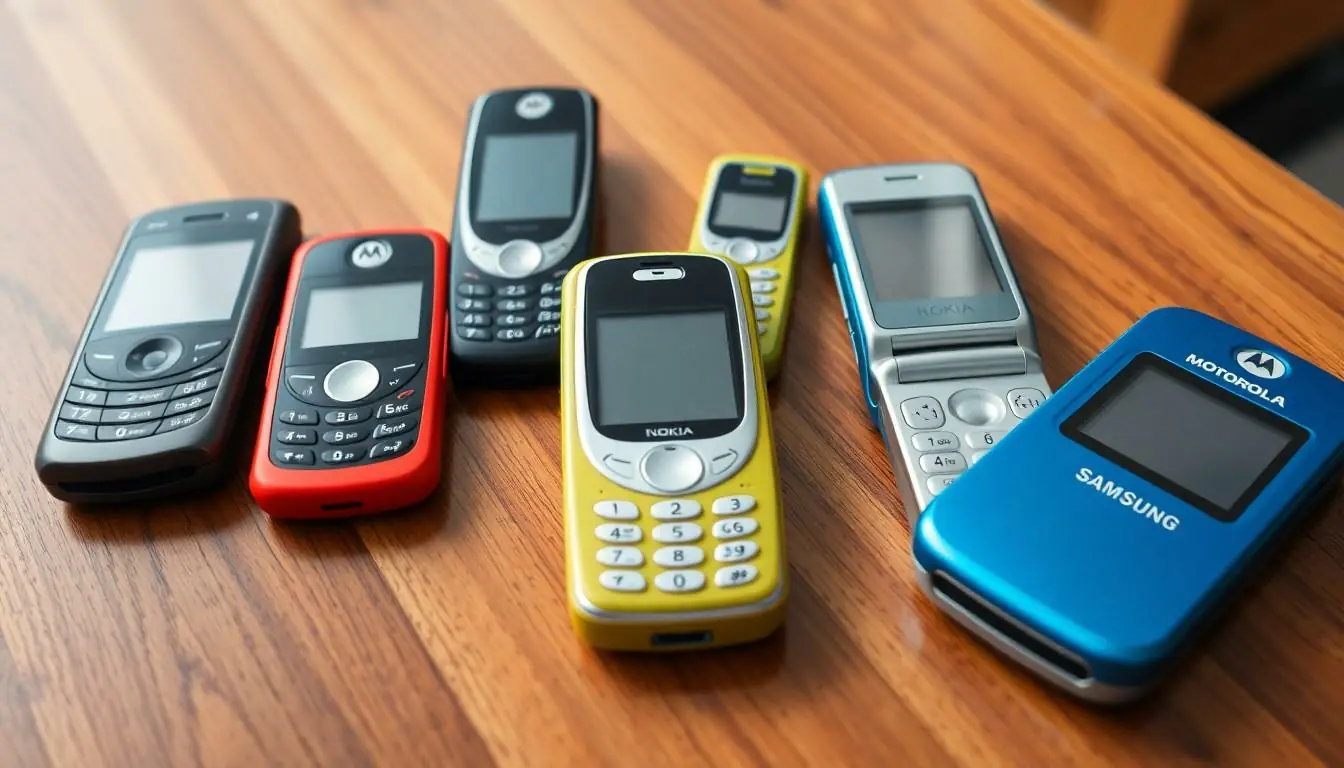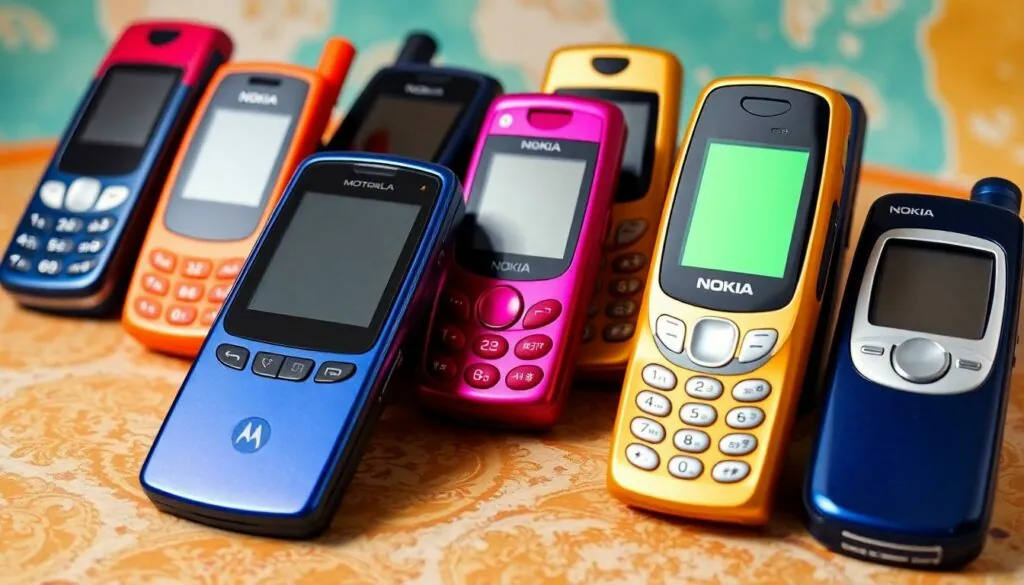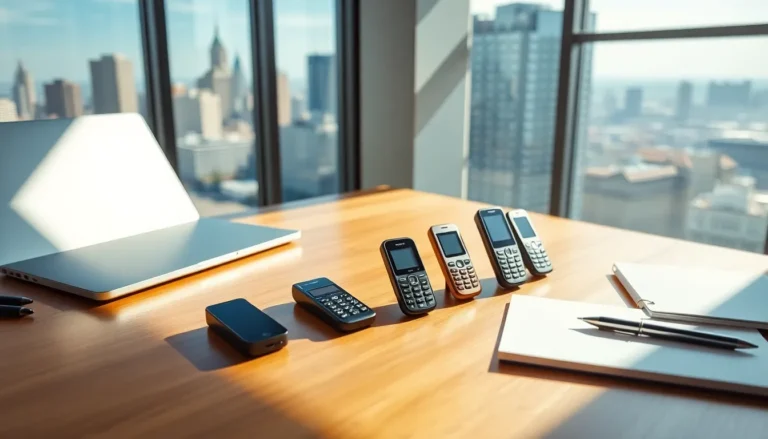Remember the thrill of flipping open a phone with a satisfying snap? The 2000s flip phones were more than just a communication tool; they were a fashion statement, a status symbol, and a gateway to a world of texting and calling without the burden of a touchscreen. With their compact design and vibrant colors, these devices turned every conversation into a mini-event, complete with dramatic flips and stylish closures.
As technology advanced, these pocket-sized wonders faded into the background, overshadowed by sleek smartphones. But let’s not forget the joy of a good flip. From the iconic Motorola Razr to the Nokia 6101, these phones defined a generation. Join us as we take a nostalgic trip down memory lane to explore the charm and quirks of 2000s flip phones, and maybe even inspire a few chuckles along the way.
Table of Contents
ToggleOverview of 2000s Flip Phones
2000s flip phones marked a transformative era in mobile technology. Compact and stylish, these devices combined functionality with flair. Users appreciated their unique mechanisms, which allowed them to snap shut, resulting in satisfying interactions. The Motorola Razr emerged as a standout model, characterized by its thin profile and vibrant colors. Another popular choice, the Nokia 6101, featured an elegant design that appealed to both practicality and aesthetics.
Various manufacturers introduced models with distinctive features such as built-in cameras and customizable ringtones. Users enjoyed personalizing their devices, showcasing individuality through stylish phone covers and wallpapers. Durability also played a crucial role, with many flip phones designed to withstand everyday wear and tear. Convenience defined this category of mobile devices, allowing for easy storage in pockets and small bags.
The cultural impact of these phones extended beyond functionality. Flip phones became synonymous with youth culture, embraced by celebrities and influencers. Trends flourished around these gadgets, with social gatherings often centered on sharing tips and tricks related to their use. The phones served as essential tools for maintaining connections, fueling conversations and social interactions.
With the rise of smartphones, flip phones gradually declined in popularity. This shift, although significant, did not diminish the nostalgia associated with the devices. Many still recall the excitement of flipping open a phone to answer a call or send a message, making the 2000s flip phones an indelible part of mobile history.
Popular Models and Brands

Several iconic flip phone models defined the 2000s, showcasing innovative designs and a blend of style and functionality. Notably, brands like Motorola, Nokia, and Samsung contributed significantly to this era of mobile technology.
Motorola Razr
The Motorola Razr emerged as a cultural phenomenon during the 2000s. It featured a sleek, ultra-thin design that revolutionized mobile aesthetics. Users appreciated its vibrant colors and customizable options, making it a fashion statement. The satisfying snap of closure added tactile pleasure to conversations. Released in various versions, the Razr’s popularity soared, with over 130 million units sold globally, solidifying its status as an icon of the decade.
Nokia Models
Nokia offered several memorable flip phone models, including the Nokia 6101 and 7270. The Nokia 6101 included colorful designs and a user-friendly interface, appealing to a broad audience. Quality and durability marked Nokia’s offerings, cementing its reputation. Customization options allowed users to personalize their devices, enhancing the user experience. As a result, Nokia established a strong foothold in the flip phone market, with devices selling millions during the 2000s.
Samsung Flip Phones
Samsung also played a key role in the flip phone landscape with models such as the SGH-E700 and SCH-U330. The Samsung SGH-E700 featured a stylish exterior and high-quality camera, which attracted tech-savvy users. Meanwhile, the SCH-U330 offered compactness and practicality, capturing the interest of consumers looking for functionality. Samsung’s dedication to innovation resulted in diverse options that resonated with various demographics, contributing to the brand’s success in the flip phone market.
Features of 2000s Flip Phones
2000s flip phones featured unique characteristics that distinguished them from modern smartphones. Their design and build quality exemplified a blend of style and sturdiness, appealing to a wide range of consumers.
Design and Build Quality
Design elements varied significantly among models, showcasing vibrant colors and sleek profiles. Compact sizes made flip phones portable and easy to fit into pockets. The Motorola Razr stood out for its ultra-thin design, while other models prioritized durability, such as Nokia’s renowned toughness. Flip mechanisms often produced a satisfying snap, contributing to user enjoyment. Personalization options, ranging from colorful covers to custom faceplates, added individuality to each device. Overall, the nostalgic designs left a lasting impression on technology and fashion.
User Interface and Functionality
User interfaces emphasized simplicity and accessibility, facilitating quick navigation. Most models featured physical keypads, allowing tactile feedback during texting and dialing. The limited screen sizes showcased essential information, while some phones included basic cameras for candid moments. Features such as SMS, ringtone downloads, and customizable wallpapers enriched user experience. Although functionality appeared modest compared to today’s smartphones, the ease of use and satisfaction of flipping the phone open created memorable interactions. These interfaces catered perfectly to the communication preferences of the era.
Cultural Impact of 2000s Flip Phones
2000s flip phones shaped culture significantly, influencing both media representations and social trends. Their distinctive designs and features made them recognizable icons of the era.
Representation in Media
Media embraced 2000s flip phones as symbols of youth and modernity. TV shows featured characters using these devices, injecting them into popular culture effortlessly. Movies showcased their stylish designs, with characters often flipping open their phones in dramatic moments. Notable films like “Mean Girls” highlighted the Razr as a must-have accessory, further embedding flip phones into the cultural narrative. Advertisements portrayed these phones not just as communication tools but also as fashionable items that defined personal identity.
Influence on Social Trends
Social trends shifted in the 2000s due to the rise of flip phones. These devices encouraged texting and instant messaging, transforming communication dynamics among teens and young adults. Peer interactions evolved, with texting becoming a primary method of connection. Customizable ringtones and phone cases allowed users to express individuality, promoting unique styles within friend groups. Furthermore, celebrities often showcased their flip phones, creating admiration and prompting younger generations to emulate their choices.
The 2000s flip phones hold a special place in the hearts of many. They symbolize a unique blend of style and functionality that defined a generation. With their vibrant designs and satisfying flips, these devices transformed everyday communication into something memorable.
While smartphones have taken over the market, the charm of flip phones remains undeniable. They not only served as communication tools but also as cultural icons that shaped trends and personal identities. The nostalgia for these devices continues to resonate, reminding users of a simpler time when a flip could spark joy and connection. Flip phones will always be celebrated for their impact on technology and fashion.



